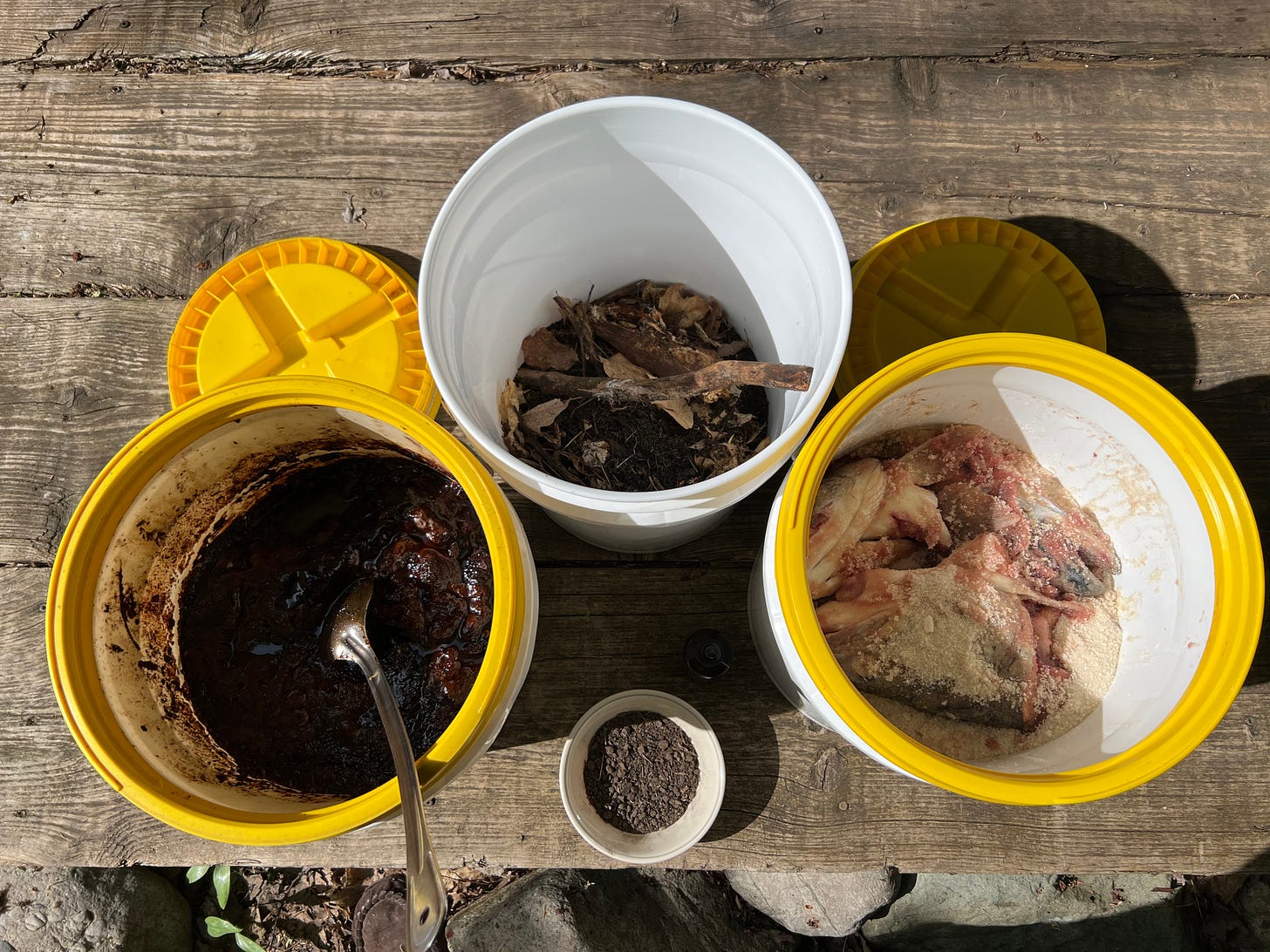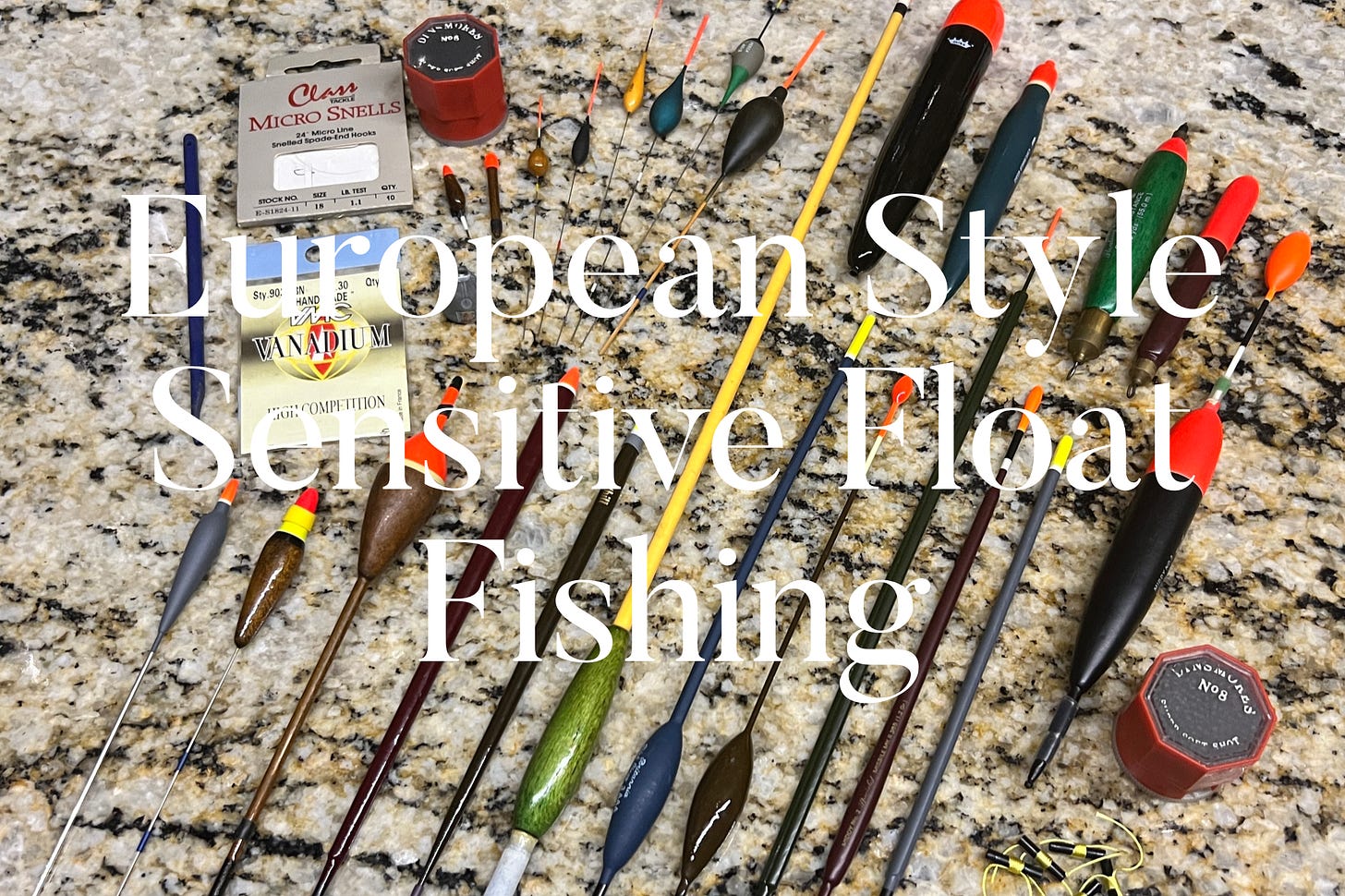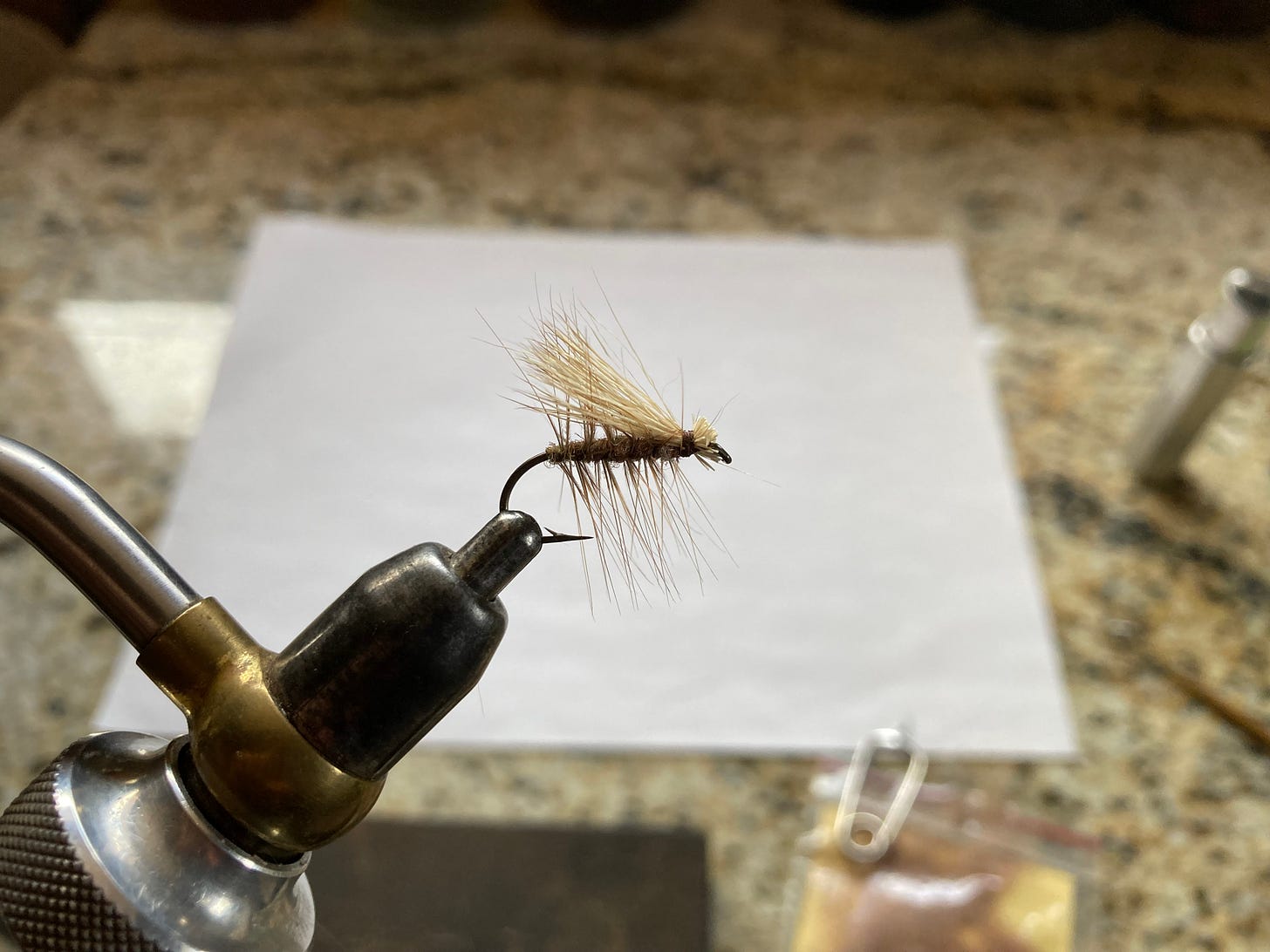February 3rd, 2024 Issue
Patience Is A Garden Virtue / Fish Amino Acids- FAA / Float Fishing Lesson #18- 90/10 Principle / Fly Tying Lesson #18 Elk Hair Caddis
Patience Is A Garden Virtue
Every year, during late winter, I see the same problem develop for other growers. A lack of patience in regards to when to start plants for their spring garden. I am very sensitive to this, because for many years my specialty was growing very early heirloom tomatoes, in unheated hoop houses. In fact my personal record was having a vine ripe tomato by April 24th. If you are familiar with Michigan, then you know we can have snow on the ground the first half of April. In upcoming issues I will be going through different season extension tricks that I have learned over the years to achieve these kinds of results.
Once I began to start to post on social media it became very clear why so many in the north are struggling with timing. If you are following people down in Florida or the Carolinas they are making preparations for their gardens long before the timing is right way up north here. Their climate is radically different than ours.
So each spring I see anxious northern growers starting their plants way too early. The plants become stunted and mineral deficient, and are the perfect stressed prey for pest and disease.
I will only hold a tomato plant for six weeks, in a quart of my soil block mix. I regularly see plants people have that are in less soil, that are more like twelve weeks old. They are already struggling to set fruit and their energy is sapped.
It is really important that you don’t get thrown off by what you see others doing. I know everyone is itching to get their hands in the soil again. If you learn the right timing for your specific climate you will be much more successful.
To be successful you need to learn how much transplant mix is necessary to hold a certain age plant, still in premium condition. If you know the age of the plant then count back from your transplant date to find the seeding date. Here in Michigan our last frost date is at the end of May. So I will seed my tomatoes mid April to transplant the first part of June. Unless I want to give them more transplant mix so I can hold them longer, or unless I have a season extension strategy that will protect them from the cold. Lord willing I will be taking you through the most basic to more advanced forms of season extension in the coming issues.
This is a picture of the inside of our seedling greenhouse during a former season.
The Regenerative Homestead Newsletter’s Main Index
This link will take you to a full Index, of all the articles that I have published, organized by topic. Making it very easy for you to go back, and revisit an article that you wanted to review again in the future.
I published this article in a separate newsletter last Tuesday. This link will take you to that newsletter.
If you know someone, that you think would enjoy this newsletter, please let them know by sharing it. Thank you!
Fish Amino Acids- FAA
The nitrogen source that the Koreans developed, comes from fermented fish. This is actually a really high quality fish sauce, that they would use for cooking. Just like with the FPJ, this is a sugar ferment.
When choosing a species of fish for this recipe, it is best to use a ocean fish like Mackerel, Tuna, even Salmon. But since I don’t live near the ocean, I use salmon or lake trout from the Great Lakes. Fish from the ocean will often have a better mineral content though. Fish that have a blue back, tend to have larger amounts of amino acids. Amino acids are very important building blocks for cell development in your plants and your soil biology.
Just like with the OHN, the longer it sits the better it gets. The longer this breaks down, the more the amino acids will break down. The smaller they break down, the more kinds of things can be built. It is kind of like a lego set. A set with just big blocks limits the complexity of what can be built. The smaller your pieces, the more flexibility you have to create many different things.
When I first started, I purchased a small amount from another farmer, then made some large batches so I would have some to share and have plenty for the future. I have multiple five gallon buckets full of this just continuing to micronize down further.
I prefer to use the heads of the fish. You can use everything when you make it, but because of the amount of heavy metals that can gather in the fat stores of the larger fish I will tend to not use everything. I have access to massive amounts of fish heads, because of friends that are charter captains.
You can use this in foliar sprays and in drenches. You are putting it 1:1000 in a foliar spray, which is like 4 milliliters per gallon. You would add this to your Maintenance Solution, when you want to encourage vegetative growth. We will go through many of the nuances in the future as we start to discuss how this is all used together.
I make my authentic winter Kimchi with this fish sauce. I have a friend that was stationed in the Army over in Korea, and he told me it gave a very authentic flavor that reminded him of what he use to get over there.
There is not another fish fertilizer that even comes close to the quality of this ferment. Over time everything will be dissolved, even the largest bones, making an extremely mineral rich fertilizer. I have a video series that shows how I make it. You will definitely want to watch the full series so that you don’t miss any of the details. God bless your efforts.
Part 1
https://rumble.com/v16gmnp-making-fish-amino-acids-faa-for-korean-natural-farming.html
Part 2
https://rumble.com/v177h9h-making-fish-amino-acids-faa-part-2-for-korean-natural-farming.html
Part 3
https://rumble.com/v4b1hf8-making-fish-amino-acids-faa-part-3-for-korean-natural-farming.html
Float Fishing Lesson #18- 90/10 Principle
I want to share with you what I call the 90/10 principle in lake fishing. 90% of the fish are in 10% of the lake. The trick is that the 10% can change moment by moment. Learning what actually draws a fish to spend time in a certain place is a major part of fishing success. Obviously you can go to the lake and just randomly cast and eventually you may find a place. I learned as a child fishing most everyday where the fish were. When I was younger I just walked around the lake casting every few steps. Then after I had done that for a few years I no longer had to do as much casting. Because I had located the locations that I almost always caught fish. So I would just automatically walk to these spots and begin to fish.
So what attracts a fish to a certain place? It could be water temperature, like we talked about in a previous lesson. It could be some kind of structure. When I was young I was ice fishing one day and just drilled a random hole in the ice. I set a special tip-up to catch pike and proceeded to out fish everyone from that hole. Later in the day I looked down the hole to see what was down there and I had placed my bait right in a tight channel between two large weed beds. The channel went from one deeper hole to another. Every pike that wanted to go from the one hole to the next traveled through this channel between the weed beds. I had discovered a pinch point by accident. Oh I wish we would have had GPS back then!
Other things that will attract fish will be food sources. That is why I spent time teaching you about aquatic insects. When a certain insect is hatching it may bring fish into an area for a few days of the whole year, where the fishing may be great, but the rest of the year the fish may avoid the area all together.
The more you can learn about the food sources, kinds of structure like sunken islands and logs, and temperature variables like springs and creeks that flow in to the lake, will make a big difference on your ability to catch fish when most people are clueless as to what is going on. All this information is building towards me sharing fishing trips with you, and going through the details of each situation. This is laying the groundwork, so you will better understand what I am talking about.
Fly Tying Lesson #18 Elk Hair Caddis
In this lesson we will be tying the Elk Hair Caddis. This is a very fun fly to fish, because the fish attach it so aggressively, if it is skated across the water’s surface.
https://rumble.com/vzbi7h-fly-tying-class-lesson-18-elk-hair-caddis.html















Wonderful; can't wait, Craig.